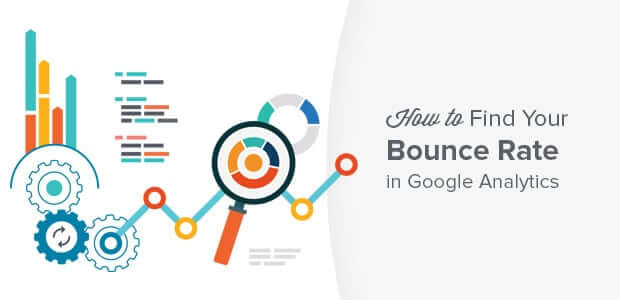
Bounce rate google analytics
Bounce rate
Your goal is to make your bounce rate as low as possible because bounce is a measure of engagement, specifically lack of engagement. A high bounce rate could mean low engagement.
A high bounce rate could mean that users don’t like your page. It could also mean that there is a mismatch between your fans’ expectations and the experience you give them. But a high bounce rate could be a good thing depending on a few different variables (your industry and page type, for example).
To calm feelings of anxiety before we dive in, you should know that even the best websites get a bounce rate of 1 out of 2 (and bounce rate is higher for B2B sites than B2C sites).
If your bounce rate falls in the 41% and 55% range, that’s considered average. Start paying attention if you achieve a bounce score of 56% to 70%. Pay more attention if your bounce rate is 70% or higher, unless your site is blog or news based, in which case, the bounce rate score makes sense and you shouldn’t worry too much about it.
Bounce rate
Many people confuse these three metrics and some even use them interchangeably. So let’s see how exit rate and dwell time compare to bounce rate.Exit rateExit rate shows the percentage of sessions that ended on a particular page.For example, imagine three people visit your page and their sessions look like this:
The Source/Medium report is an example of an aggregate report where the bounce rate is irrelevant.Our advice is to never look at the bounce rate in an aggregate report like this.Bounce rates change from page to page, so you always want to include the landing page dimension in your reports and then choose the channel you want to analyze. In my case, I went to the “Landing Pages” report (Behavior > Site Content > Landing Pages), then removed the default “All Users” segment and applied an “Organic Traffic” segment instead:
Bounce rate
To talk about the bounce rate we must first know what it is. If we define it easily, we can say that it is the percentage of users who arrive at the website and almost immediately leave without leaving a trace, that is, without navigating or clicking anywhere else on the site.
Before deciding whether a high bounce rate is something negative, you must first consider the purpose of the page, because if your users find what they were looking for without further interaction on your site, it would be reflected in a longer stay and not necessarily in the bounce.
As you may have noticed, the importance of the bounce rate is based on the objective or function of the websites for which they have been created. So remember when reading your metrics, consider each of the above points before categorizing a bounce rate as bad or good.
If you are unsure of how to interpret this data correctly, always consult an expert in Digital Data Analytics, learn more about our specialties and how Kubik can help you.
How to improve bounce rate
Some techniques to improve the slowness of the page can be, for example, to compress the images, since if the images are too heavy it is usually one of the main reasons why the pages load slowly. On the other hand, use a fast hosting and remove unused scripts or plugins.
Both bounce rate and exit rate are concepts that measure website engagement, but there are differences between the two. On the one hand, bounce rate measures the number of users who enter a website and leave without interacting in any way and without visiting any other page of the website. On the other hand, the exit rate measures the percentage of users who have ended their visit on a particular page of your website. It tells you the percentage of people who leave or end their visit to your website on a specific page.

